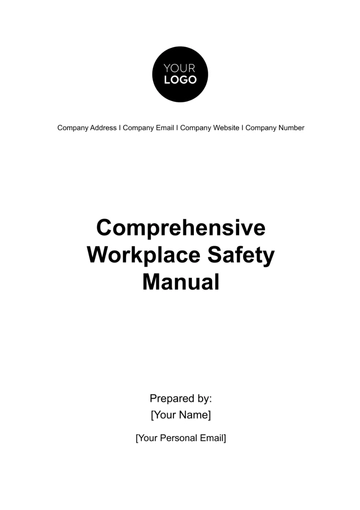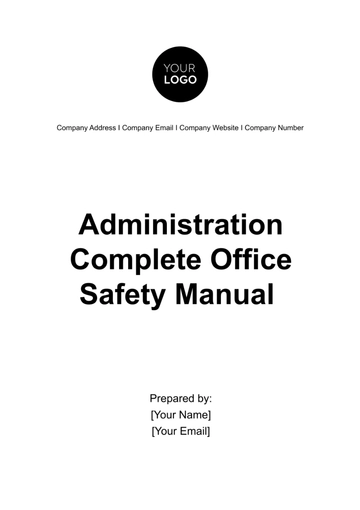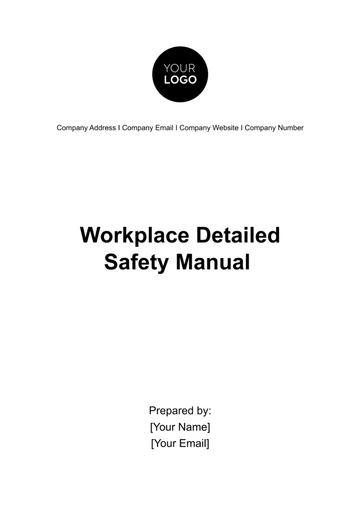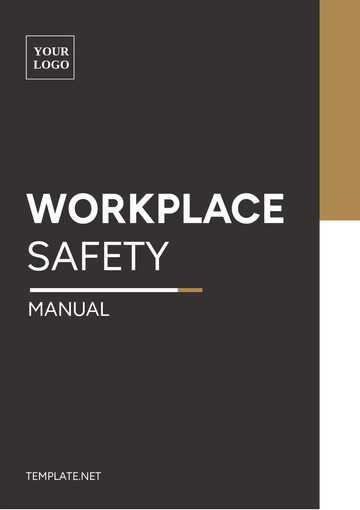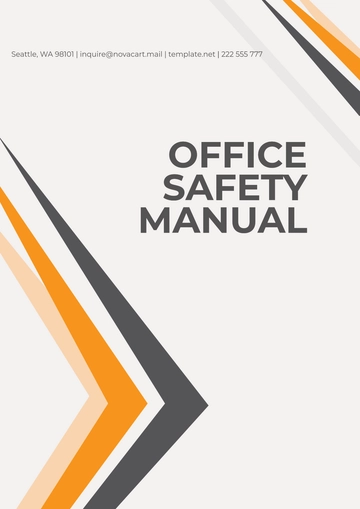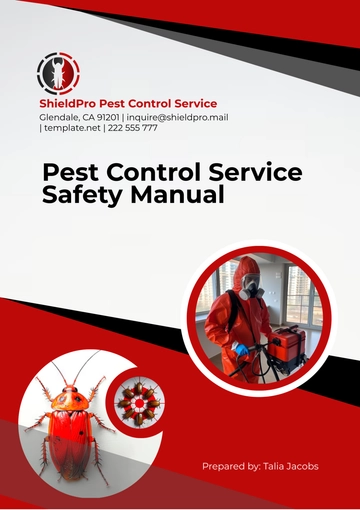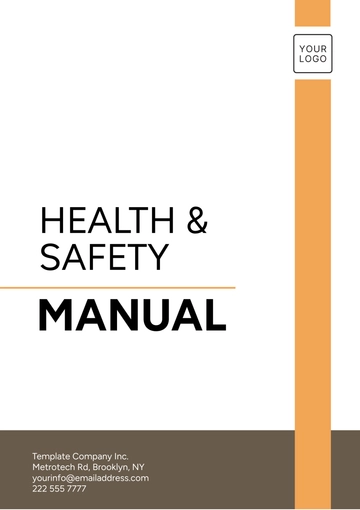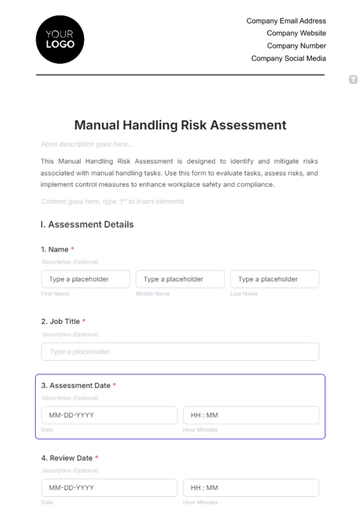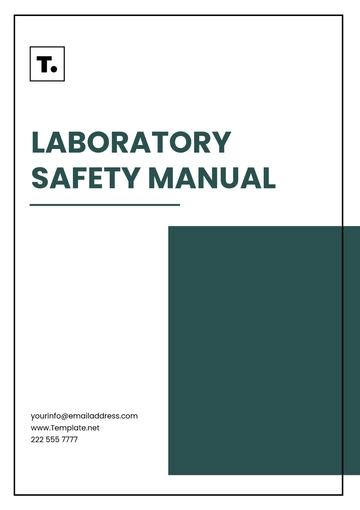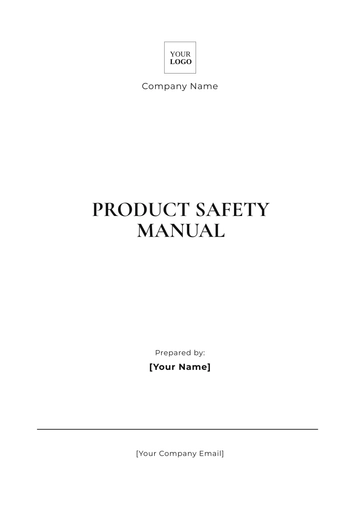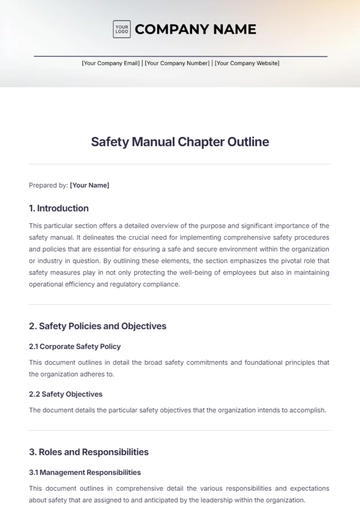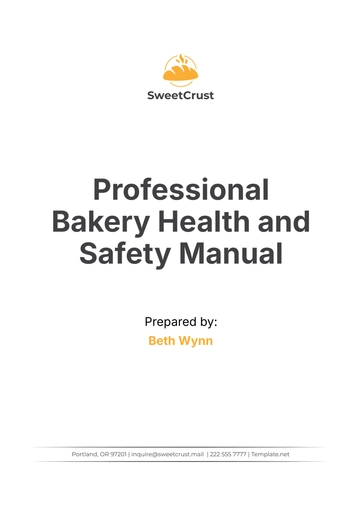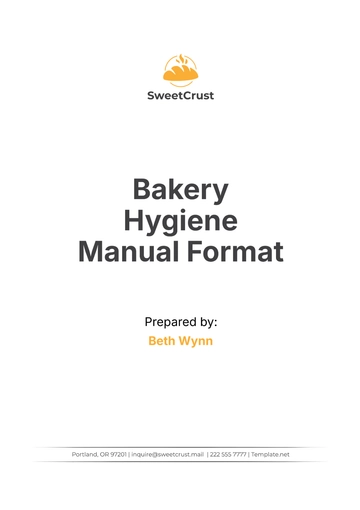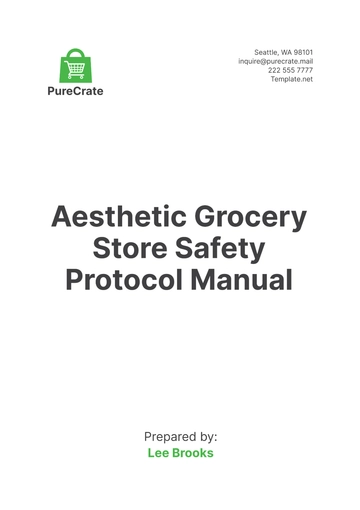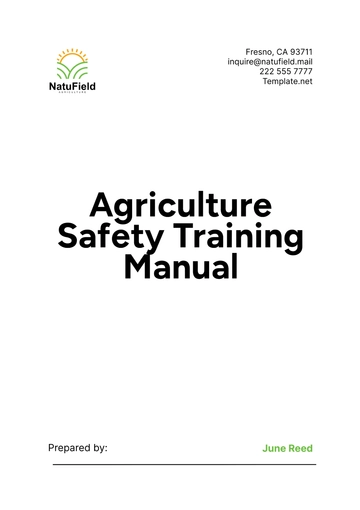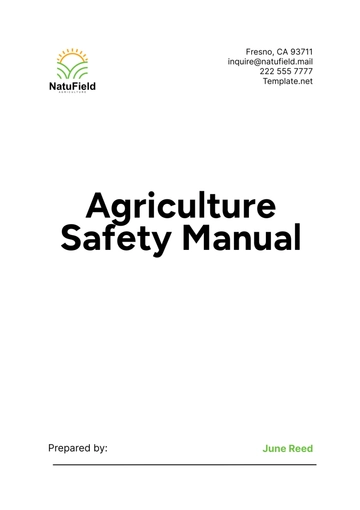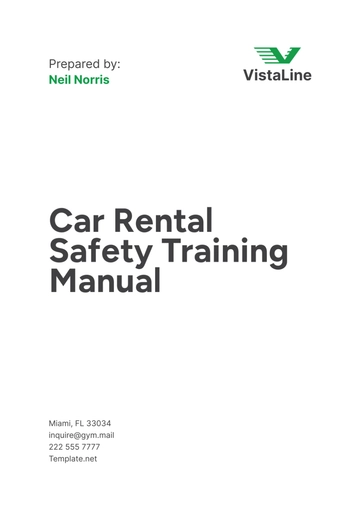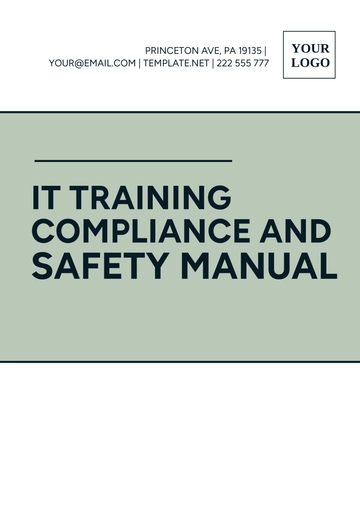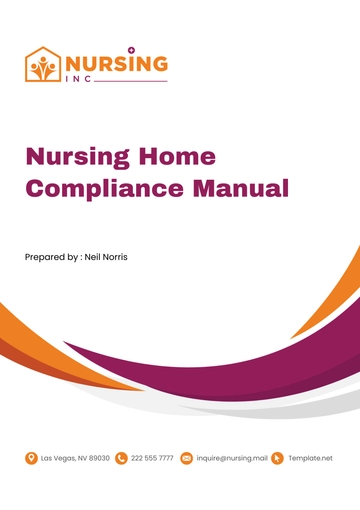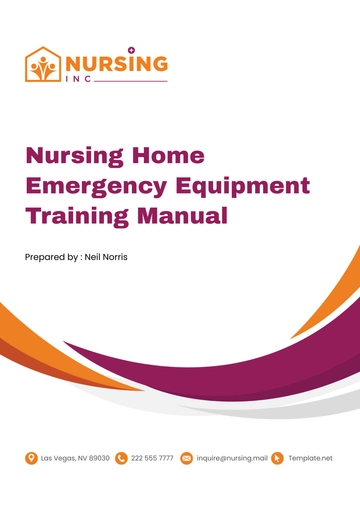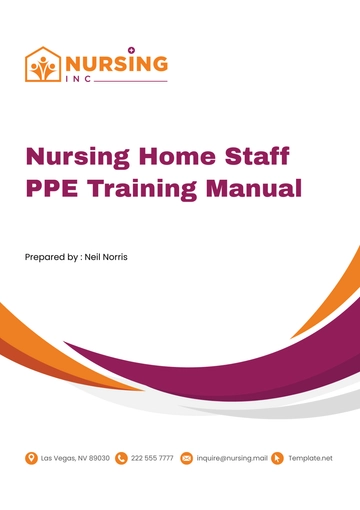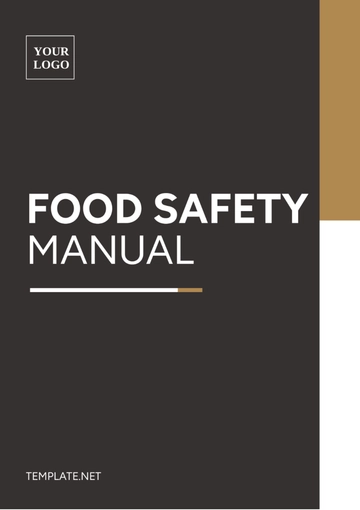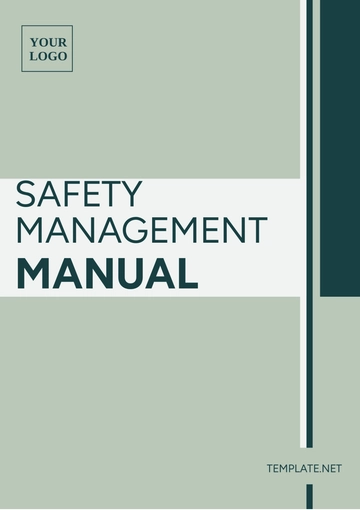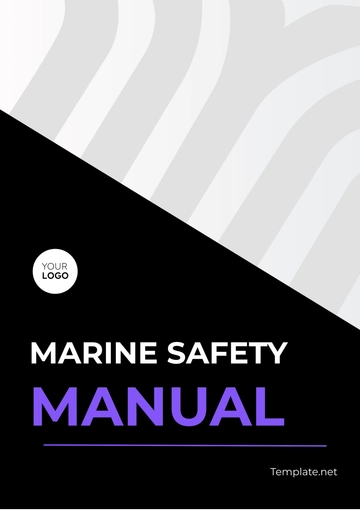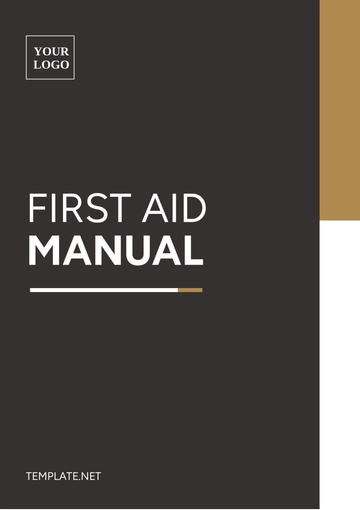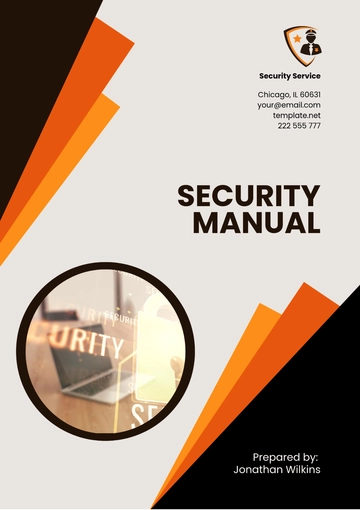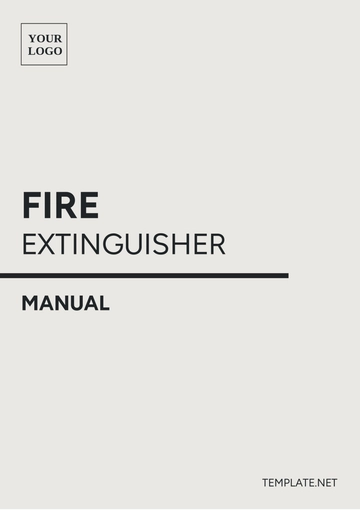Free Health & Safety Safety Manual
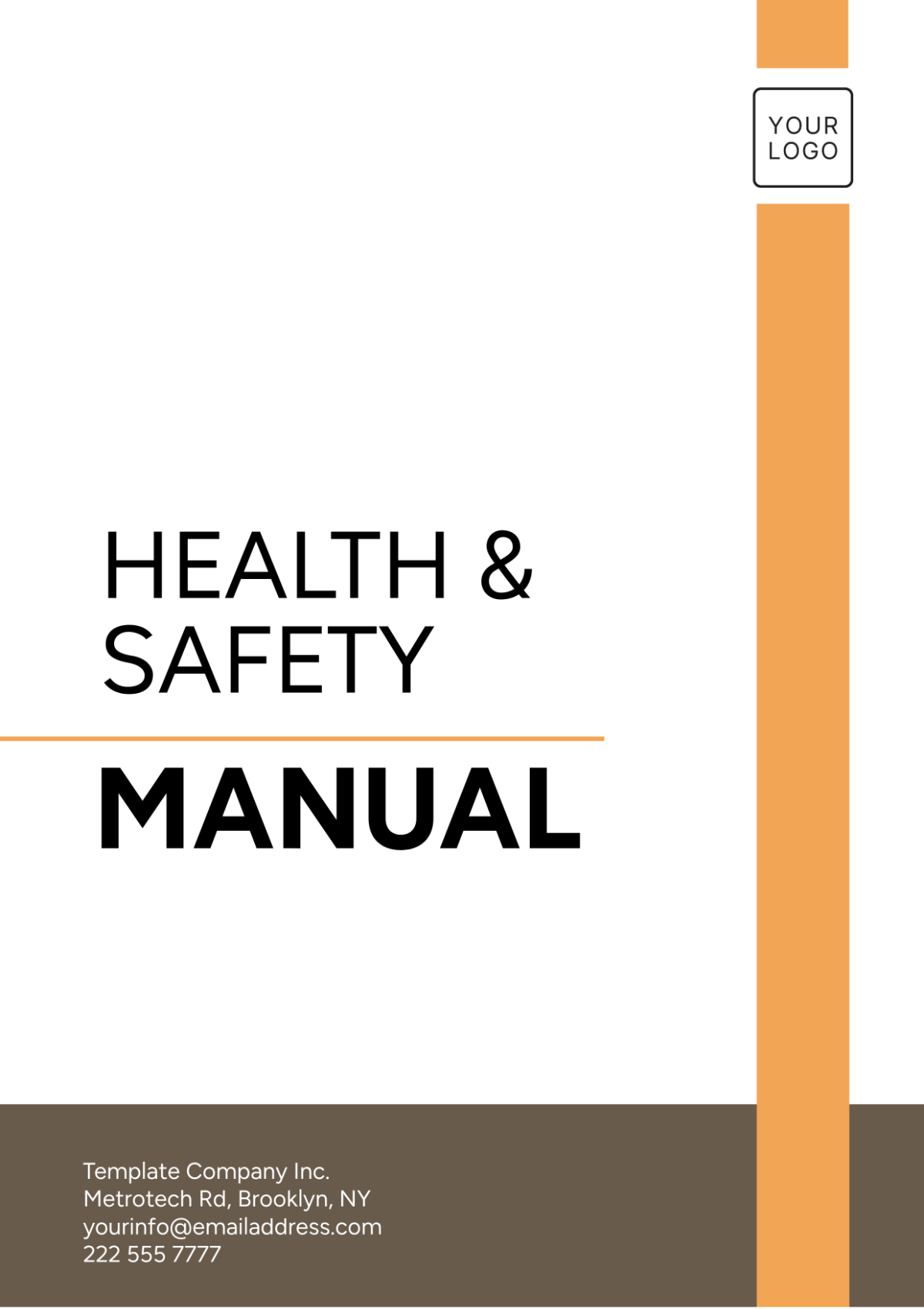
I. Introduction
Welcome to the Health & Safety Manual for [Your Company Name]. This manual is designed to ensure a safe and healthy working environment for all employees, contractors, and visitors. Our commitment to health and safety is integral to our operations, reflecting our dedication to maintaining high standards of workplace safety and complying with applicable regulations. By adhering to the guidelines set forth in this manual, we aim to minimize risks and promote well-being throughout our organization.
The health and safety protocols outlined herein are aligned with OSHA standards and other relevant federal and state regulations. They are intended to provide clear instructions and procedures for handling potential hazards, reporting incidents, and maintaining a safe work environment. Regular updates and training will be provided to ensure that all team members are well-informed about safety practices and emergency procedures. We encourage all employees to actively participate in our health and safety programs and to report any safety concerns or suggestions for improvement. Together, we can create a safer workplace and uphold our commitment to the highest standards of health and safety.
II. General Safety Policies
The General Safety Policies section outlines the essential responsibilities of both employees and employers to ensure a safe and secure workplace at [Your Company Name]. Understanding and adhering to these responsibilities is crucial for maintaining a hazard-free environment. This section provides a framework for how safety practices should be integrated into daily operations and emphasizes the importance of collective participation in upholding safety standards.
Employees are expected to follow all established safety procedures, report unsafe conditions or behaviors, and actively engage in safety training sessions. Similarly, employers are responsible for creating a safe working environment, ensuring comprehensive safety training, and maintaining equipment. Addressing and resolving safety concerns promptly is a shared commitment to ensuring workplace safety and health.
Employee Responsibilities | Employer Responsibilities |
|---|---|
|
|
III. Emergency Procedures
Effective emergency procedures are critical for ensuring the safety and well-being of everyone at [Your Company Name]. This section provides clear guidelines for responding to fire and medical emergencies, which are essential for minimizing harm and ensuring a swift and organized response during such incidents. Adhering to these procedures can significantly impact the effectiveness of our emergency response and the safety of our employees and visitors.
For fire safety, promptly activating the nearest alarm and evacuating using designated exits are key steps. In medical emergencies, immediate contact with emergency services and administering first aid, if qualified, are vital. Reporting incidents to a supervisor ensures proper documentation and follow-up. Together, these actions help maintain a secure environment and protect everyone on our premises.
A. Fire Safety
In the event of a fire:
Activate the nearest fire alarm.
Evacuate the building using the nearest exit.
Do not use elevators during evacuation.
Gather at the designated assembly point.
B. Medical Emergencies
In the event of a medical emergency:
Call emergency services immediately.
Provide first aid if trained to do so.
Report the incident to a supervisor.
IV. Hazard Communication
Effective hazard communication is crucial for maintaining a safe work environment at [Your Company Name]. This section details the procedures for understanding and managing hazardous materials, ensuring that employees are well-informed about potential risks and how to handle them safely. Proper hazard communication helps prevent accidents and injuries by ensuring everyone is aware of the dangers associated with certain substances and the appropriate precautions.
Understanding labels and signs is the first step in hazard communication, as they provide essential information about the materials in use. Additionally, Safety Data Sheets (SDS) are critical resources that offer comprehensive details on hazardous substances, including their composition, potential hazards, and emergency measures. Familiarizing yourself with these resources is essential for safe handling and compliance with safety regulations.
A. Understanding Labels and Signs
Properly labeling hazardous materials is essential for ensuring safety at [Your Company Name]. This section emphasizes the importance of reading and comprehending hazard warning signs and labels before handling any substances. Adhering to the precautions outlined helps prevent accidents and maintains a safe work environment.
All hazardous materials must be properly labeled.
Read and understand all hazard warning signs and labels before using any substance.
Follow all precautions outlined on labels and signs.
B. Safety Data Sheets (SDS)
Safety Data Sheets are available for all hazardous materials and must be reviewed before handling substances. Key sections of an SDS include:
Section | Contents |
|---|---|
1. Identification | Product identifier and supplier details. |
2. Hazard(s) Identification | All identified hazards, including symbol(s). |
3. Composition/Information on Ingredients | Information on chemical ingredients. |
4. First-Aid Measures | Necessary first-aid steps in case of exposure. |
V. Personal Protective Equipment (PPE)
Personal Protective Equipment (PPE) is vital for safeguarding employees at [Your Company Name] from various workplace hazards. This section outlines the types of PPE available, including head protection, eye protection, hearing protection, hand protection, and respiratory protection. Proper selection and use of PPE are essential for minimizing exposure to potential risks and ensuring safety across different tasks and environments.
Correct use of PPE involves choosing the appropriate equipment for specific hazards, inspecting it before use to confirm its condition, and adhering to the manufacturer's guidelines for proper fitting and use. It is also crucial to replace any damaged or worn PPE immediately to maintain effective protection and prevent accidents.
Types of PPE |
|
Proper Use of PPE |
|
VI. Accident Reporting and Investigation
Accurate and timely reporting of accidents, injuries, and near-misses is crucial for maintaining safety at [Your Company Name]. This section outlines the procedures for reporting incidents, including notifying your supervisor immediately, completing an accident report form, and submitting it to the Safety Officer. Adhering to these steps ensures that all incidents are properly documented and addressed.
Following the reporting, the Safety Officer will lead a thorough investigation into the incident. This process includes interviewing witnesses and involved parties, documenting findings, and sharing them with management and staff. Implementing corrective actions based on these findings helps prevent similar occurrences and enhances overall workplace safety.
A. Reporting Procedures
All accidents, injuries, and near-misses must be reported using the following procedures:
Immediately notify your supervisor.
Complete an accident report form.
Submit the completed form to the Safety Officer.
B. Investigation Process
The Safety Officer will conduct a thorough investigation.
Interviews will be conducted with witnesses and involved parties.
Findings will be documented and shared with management and staff.
Corrective actions will be implemented to prevent recurrence.
VII. Conclusion
Maintaining a safe and healthy work environment at [Your Company Name] is a shared responsibility that requires the active participation of all employees and management. By adhering to the guidelines and procedures outlined in this Health & Safety Manual, we collectively contribute to a safer workplace. Our commitment to following these protocols ensures that potential hazards are managed effectively and that we are prepared to respond promptly to emergencies. Regular training and updates will keep everyone informed and engaged in our safety efforts, reinforcing our dedication to health and safety in all aspects of our operations.
Safety is not just about compliance but also about fostering a culture of care and vigilance. We encourage all employees to take personal responsibility for their safety and that of their colleagues by staying informed about safety practices, using personal protective equipment correctly, and reporting any safety concerns immediately. Together, we can create a safer work environment where everyone feels protected and valued. Thank you for your ongoing commitment to upholding the highest standards of health and safety at [Your Company Name]. Your proactive efforts are essential in maintaining our safe and productive workplace.
- 100% Customizable, free editor
- Access 1 Million+ Templates, photo’s & graphics
- Download or share as a template
- Click and replace photos, graphics, text, backgrounds
- Resize, crop, AI write & more
- Access advanced editor
Create a comprehensive safety guide with Template.net's Health & Safety Manual Template. Fully editable and customizable, this template allows you to outline essential safety procedures and protocols. Tailor every section to your organization’s needs, editable in our Ai Editor Tool, for a professional manual that ensures workplace safety.
